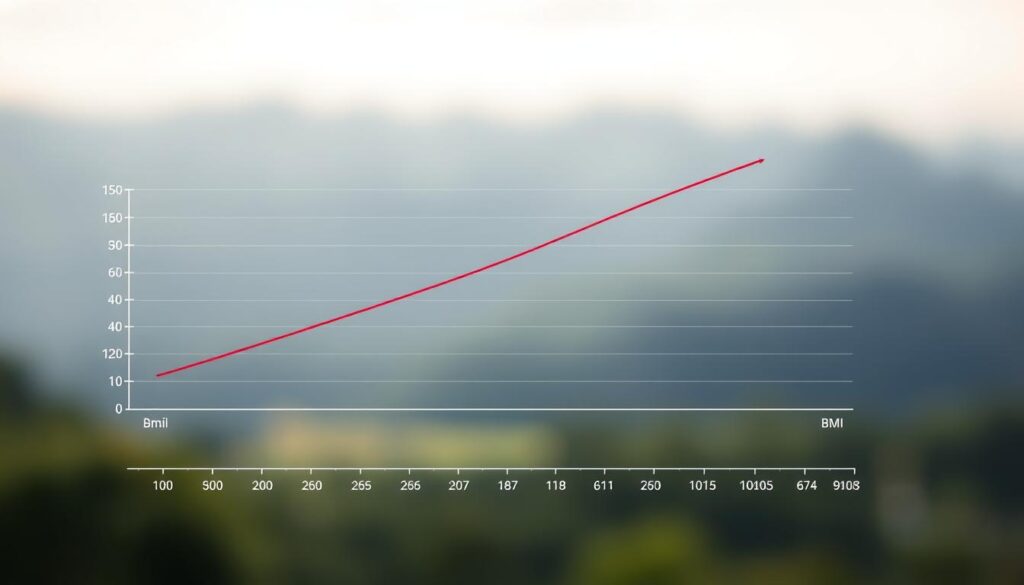Many parents assume their child’s weight alone determines their well-being. But what if there’s a more precise way to understand growth patterns and health risks? Our tool analyzes height, age, and body mass to provide insights tailored to young individuals aged 2 to 19.
Unlike generic assessments, this resource uses CDC growth charts to compare results against peers. It calculates a percentile ranking, helping you see where your child stands. However, it’s not a diagnostic tool—always pair findings with advice from a pediatrician.
Curious how it works? Enter three simple metrics: birthdate, current weight, and height. The system adjusts for developmental stages, ensuring accuracy for toddlers, teens, and everyone in between. For families exploring effective strategies for improving body composition, this data offers a starting point.
Key Takeaways
- Evaluates growth using height, weight, and age-specific metrics
- Designed for ages 2–19 with CDC chart comparisons
- Provides percentile rankings and categories
- Requires professional interpretation for full context
- Simple three-step input process
Understanding Child BMI and Growth Trends
Growth patterns in young individuals tell a deeper story than numbers on a scale. Body mass index evaluates weight relative to height, offering insights into development aligned with age and biological sex. This metric becomes meaningful when paired with growth charts tracking changes over time.

What Is Body Mass Index?
This measurement compares a person’s mass to their stature. For adults, results fall into fixed categories like “normal” or “obese.” Young people, however, require dynamic analysis. Their scores shift with hormonal changes, bone growth, and muscle development.
Unique Factors in Youth Assessments
Pediatric evaluations use percentile rankings instead of absolute values. A 75th percentile score means a child’s measurement exceeds 75% of peers sharing their age and sex. These rankings adapt to natural growth spurts and plateaus absent in adult evaluations.
Physical activity levels and nutritional habits influence these metrics. For example, athletes might show higher scores due to muscle density rather than fat. Our tool contextualizes results within four ranges—from underweight to obesity—while emphasizing professional guidance for accurate interpretation.
How Our BMI calculator for children Operates
Parents often seek clarity about their child’s development beyond basic measurements. Our system simplifies this process through three streamlined steps, delivering insights in under 30 seconds.

Step 1: Input Essentials
Begin with the birthdate to establish age-specific benchmarks. Select preferred units—pounds or kilograms for weight, inches or centimeters for height. Sex designation ensures alignment with CDC growth charts used in pediatric evaluations.
Step 2: Instant Analysis
The tool calculates a percentile ranking by comparing entered data against national averages. A visual growth chart plots results, showing how your child’s measurements relate to peers. Four color-coded categories appear:
| Category | Percentile Range | Health Context |
|---|---|---|
| Underweight | Below 5th | Consult pediatrician |
| Healthy | 5th–84th | Monitor annually |
| Overweight | 85th–94th | Discuss habits |
| Obesity | 95th+ | Seek guidance |
Results highlight connections between body composition and lifestyle factors. For active teens, notes explain how muscle mass might influence rankings.
“Percentiles help identify trends, not absolutes. Always pair digital tools with clinical evaluations.”
Our algorithm updates calculations for growth spurts common in children aged 6–12 years. Optional fields let families track changes in physical activity levels or dietary patterns over time.
Interpreting Your Child’s BMI Results and Health Implications
Decoding your child’s health numbers can feel like solving a puzzle without all the pieces. Percentile rankings offer context by comparing measurements to peers of the same age and biological sex. Let’s break down what these results mean—and how to act on them.
Understanding BMI Percentiles and Categories
A percentile below 5 signals potential underweight, while 5–84 reflects a typical range. Scores between 85–94 indicate overweight, and 95+ suggests elevated body fat levels. These thresholds help identify growth patterns needing attention.
| Category | Percentile | Action |
|---|---|---|
| Underweight | <5th | Assess nutrition |
| Healthy | 5th–84th | Annual checks |
| Overweight | 85th–94th | Adjust habits |
| Obesity | ≥95th | Medical review |
Next Steps: Guidance and Health Advice
Share results with your pediatrician—they’ll consider bone structure, muscle mass, and family history. For teens in higher percentiles, gradual changes work better than strict diets. Focus on balanced meals and consistent sleep schedules.
“Percentiles are snapshots, not forecasts. Look for trends over 6–12 months to gauge progress.”
Integrating Physical Activity and Nutritional Information
Boost daily movement through sports, dancing, or family walks. Swap sugary drinks for water and add colorful veggies to meals. Track improvements using our growth chart tool every 3 months.
- 60+ minutes of daily activity for school-age kids
- Limit screen time to 2 hours (non-school)
- Involve children in meal planning
These steps help address risk factors while supporting natural development. Remember: health journeys evolve—celebrate small wins!
Conclusion
Understanding growth trends in young people requires tools that adapt to their changing bodies. Our resource simplifies this by comparing weight and mass against national averages, giving families clear percentile rankings. These insights help identify whether a child falls within healthy ranges or faces potential risk factors linked to elevated body fat levels.
Regular use of this tool supports long-term tracking, highlighting patterns that single measurements might miss. Accurate height and weight inputs ensure reliable results, especially during growth spurts common in children and teens. While the data provides valuable information, always pair it with a healthcare provider’s advice for a complete health picture.
For families seeking deeper insights, explore our guide on body mass index evaluations. Combine these resources with balanced nutrition and consistent activity to promote lifelong well-being. Together, we can help young individuals thrive—one informed step at a time.


